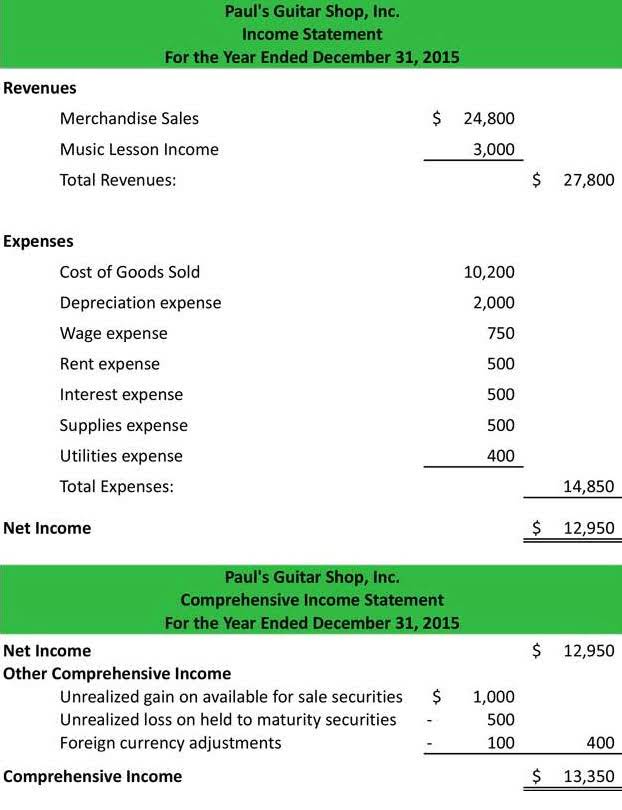They can create long-term stability and trust among stakeholders, aggressive policies might attract investors seeking higher returns. If a company distributes its financial statements outside of the company, GAAP must be followed. By following this principle, businesses can assess their revenue at any given time more accurately. In accounting, consistency and accuracy are critical, especially when it comes to protecting investors and strategic planning. That’s why many businesses (especially publicly-traded businesses) adhere to guidelines and best practices known as Generally Accepted Accounting Principles (GAAP). GAAP distinguishes between operating leases and capital leases, while IFRS classifies all leases with a lease term of more than 12 months as finance leases unless the asset is of low value.
While GAAP is not globally mandated like IFRS, its principles and practices have influenced accounting standards in other countries. Some jurisdictions, such as Japan and India, have developed their national accounting standards while incorporating elements of GAAP to align with international best practices. Meanwhile, International Financial Reporting Standards (IFRS) emerged as a response to the globalization of capital markets and the need for harmonized accounting standards across borders. The International Accounting Standards Committee (IASC) was formed in 1973 to develop international accounting standards.
When the IASB sets a brand new accounting standard, several countries tend to adopt the standard, or at least interpret it, and fit it into their individual country’s accounting standards. These standards, as set by each particular country’s accounting standards board, will in turn influence what becomes GAAP for each particular country. For example, in the United States, the Financial Accounting Standards Board (FASB) makes up the rules and regulations which become GAAP.
They are integral to the functioning of global financial markets and the broader economy. The principles ensure that financial reports are prepared in a manner that is understandable to people with a reasonable knowledge of business and economic activities. The Financial Accounting Standards Board (FASB) is the body that currently establishes and improves GAAP. It’s an independent, private-sector organization that operates only in the interest of serving the public and meeting the needs of investors, lenders, and other users of financial reports. It operates to address the constantly changing financial and business environment and adapt the GAAP guidelines to meet these changes.
Principle of Periodicity
For professionals in non-accounting roles, understanding what’s behind an organization’s numbers can be immensely valuable. Knowing how to analyze financial statements can improve your ability to communicate results and boost collaboration with colleagues in more numbers-focused positions. This is true under IFRS as well, however, IFRS also requires certain R&D expenditures to be capitalized (e.g. some internal costs like prototyping).
GAAP vs IFRS: Key Differences in Financial Reporting Standards
My consent applies regardless of my inclusion on any state, federal, or other do-not-call lists. Still looking for the right degree program to help you prepare for a career in accounting? Johnson & Wales University offers an online Bachelor of Science in Accounting covering essential accounting topics such as+- taxation, auditing, accounting information systems, and much more. Plus, with a convenient online format, you can work at your own pace and complete your degree in an average of four years. Here are some frequently asked questions about the similarities and differences between GAAP vs. IFRS. Under GAAP, revenue is recognized when it is realized or realizable, and earned.
GAAP vs. IFRS: What Are the Key Differences and Which Should You Use?
This ensures that investors, auditors, and team members can easily evaluate different financial statements, identify trends over time, and make evidence-based decisions. Generally Accepted Accounting Principles (GAAP) are set, monitored, and revised by the Financial Accounting Standards Board (FASB) in the United States. All U.S. publicly traded companies must follow GAAP standards when creating their financial statements, as well as governments, including state and municipal entities. However, it’s worth noting that the U.S. government is not responsible for setting GAAP standards – this is done by independent boards. Systems of accounting, or accounting standards, are guidelines and regulations issued by governing bodies. They dictate how a company records its finances, how it presents its financial statements, and how it accounts for things such as inventories, depreciation, and amortization.
- GAAP (Generally Accepted Accounting Principles) and IFRS (International Financial Reporting Standards) are two different sets of accounting standards used worldwide.
- Each department brings its unique perspective and expertise, which can help you identify potential challenges and solutions that may not be apparent to a single department.
- Research your industry’s accounting practices to determine the most suitable framework.
- Under GAAP, Research and Development (R&D) expenditures are generally expensed as they occur with few exceptions such as capitalized software costs.
- To summarize, here’s a detailed breakdown of how the two standards differ in their treatment of interest and dividends.
- Regardless of the outcome, the dynamic nature of accounting standards will persist, calling for adaptability, informed choices, and a keen understanding of how GAAP and IFRS impact financial reporting.
The point of IFRS is to maintain stability and transparency throughout the financial world. IFRS enables the ability to see exactly what has been happening with a company and allows businesses and individual investors to make educated financial decisions. Regular reviews and updates to accounting policies are critical to ensure they remain relevant and practical.
Eric also creates free accounting resources, including manuals, spreadsheet trackers, and templates, to support small business owners. Similar to inventory write-down reversals, the US GAAP doesn’t allow impairment loss reversal, while the IFRS allows such reversals only up to the extent of the impairment previously recorded. In other words, under IFRS, an impairment reversal cannot increase the fixed asset’s value beyond its original cost.
The Value of Accounting Knowledge
This understanding becomes even more critical as businesses increasingly operate on an international understanding gaap vs ifrs scale. Financial reporting standards play a crucial role in ensuring transparency and consistency across global markets. The two dominant frameworks, US Generally Accepted Accounting Principles (GAAP) and International Financial Reporting Standards (IFRS), serve as the backbone for financial accounting worldwide.
- This suggests a gradual shift towards a unified global accounting standard in the future.
- Differences between GAAP and IFRS decrease the comparability of financial statements published in the US compared with those published internationally.
- You may be able to deduct the equipment cost from your taxes immediately, but under GAAP, you depreciate them over time.
As many organizations continue to expand beyond borders, understanding the dynamics of GAAP and IFRS becomes more essential than ever. These principles hold businesses accountable by requiring them to present an accurate depiction of their financial position. They deter fraudulent or deceptive practices and can lead to better overall corporate governance. Financial reporting principles make it possible to compare the financial health and performance of different companies. This is particularly important for investors and creditors who need to make informed decisions about where to allocate resources.
Accounting policies are the rules businesses follow to record and report finances, ensuring accuracy, consistency, and compliance. On a similar note, the revenue recognition principle of accounting states that a business using the accrual accounting method should document revenue when it has been earned and not necessarily when payment is received. This may mean, for example, documenting revenue at the time goods or services are rendered rather than when payment is received by the client/customer. In the United States, many businesses, agencies, and nonprofits are required to comply with GAAP standards.
Understanding the key differences between these two accounting standards is essential for businesses operating in a global marketplace. IFRS is principles-based, which enables accountants to be more flexible and use professional judgment in applying accounting standards to complex accounting transactions. GAAP, on the other hand, is rules-based because it lays out specific rules for accountants to follow in dealing with specific accounting issues.
Remember, understanding these principles is more than just a numbers game – it’s about making sense of the financial world around us. Under GAAP, Research and Development (R&D) expenditures are generally expensed as they occur with few exceptions such as capitalized software costs. In contrast, IFRS treats research costs similarly but allows for development costs to be capitalized if certain criteria are met, thereby recognizing some R&D costs as assets on the balance sheet. However, IFRS simplifies this approach by considering all leases as ‚finance leases‘, eliminating the need for classification. While IFRS includes leases for some kinds of intangible assets, GAAP categorically excludes leases of all intangible assets. Under GAAP, a two-step process is used to identify and measure impairment losses.
On the contrary, IFRS is recognized as a „principles-based“ framework offering a broader set of overarching principles and concepts without the extensive details in GAAP. This allows for judgment and interpretation and grants greater flexibility in adapting to different business scenarios‘ unique circumstances and complexities. The principles-based nature of IFRS emphasizes substance over form, focuses on the economic reality of transactions, and encourages a more nuanced and context-specific approach to financial reporting. Revenue recognition is a fundamental aspect of financial reporting, dictating when and how revenue is recorded in the financial statements. Under GAAP, the guidelines for revenue recognition are detailed and industry-specific, governed primarily by the Financial Accounting Standards Board (FASB) through the Accounting Standards Codification (ASC) 606.
Accounting policies are never fixed, but they are all required to follow the standards set out by IFRS or GAAP regulations. IFRS is standard in the European Union (EU) and many countries in Asia and South America, but not in the United States. The Securities and Exchange Commission won’t switch to International Financial Reporting Standards in the near term, but will continue reviewing a proposal to allow IFRS information to supplement U.S. financial filings. Countries that benefit the most from the standards are those that conduct a lot of international business and investing. GAAP principles are also based on historical data, which may not always be reliable in dynamic markets or industries.
.jpg)
.jpg)





.jpeg)
.jpeg)
.jpeg)




